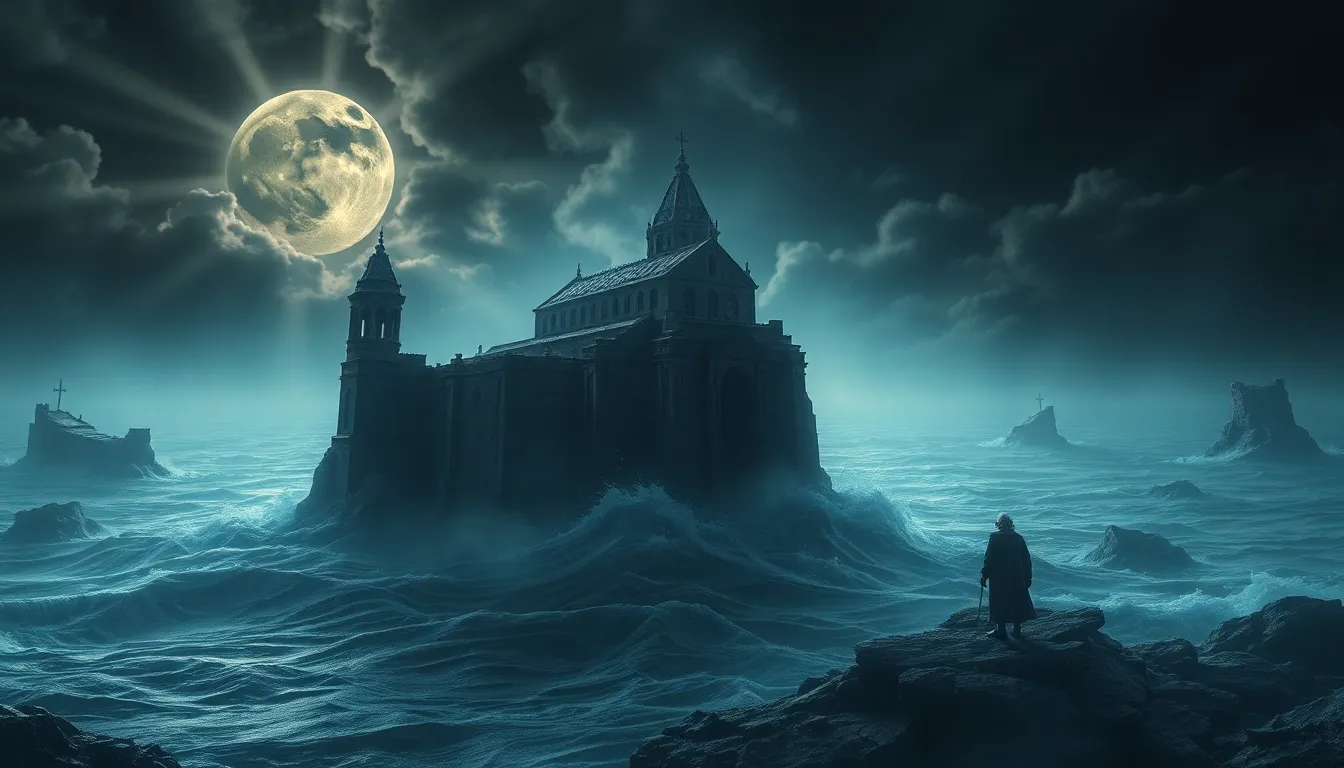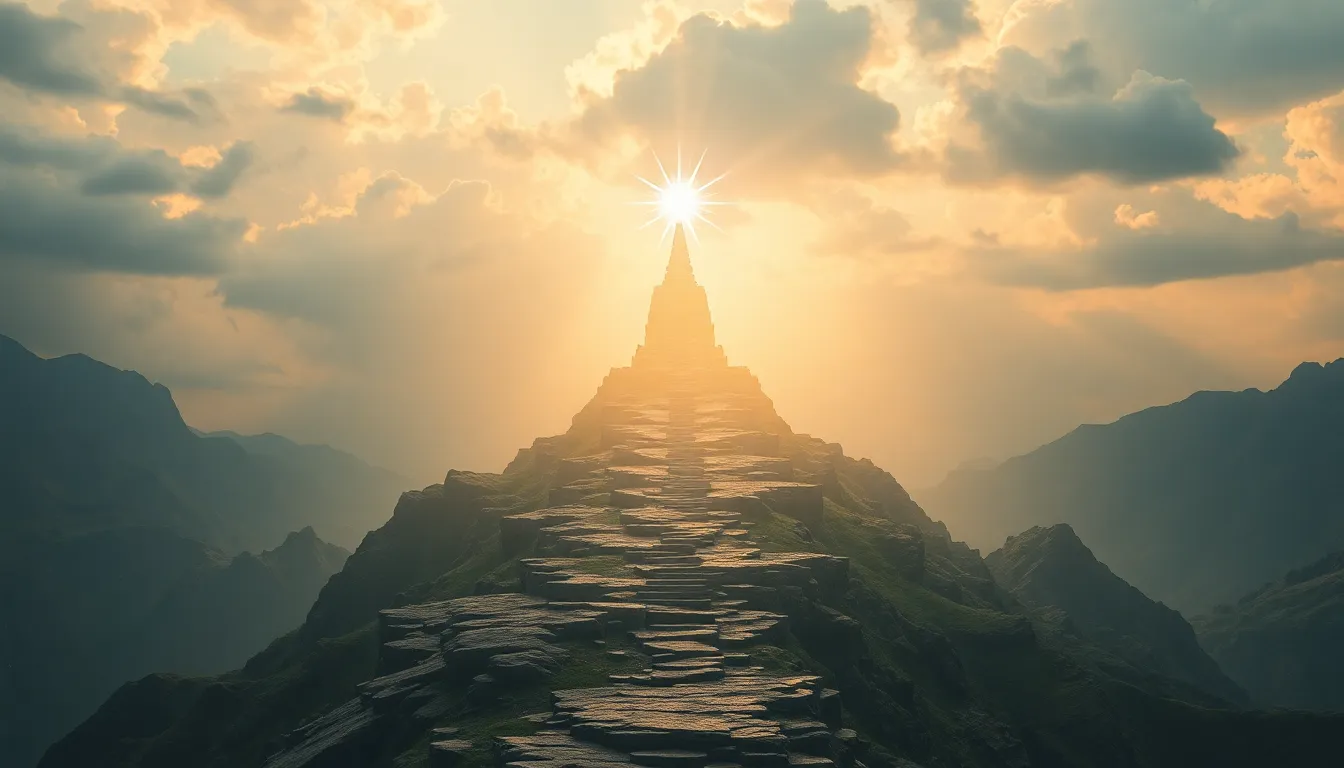The Myth of the Great Flood: Fact or Fiction?
I. Introduction
The Great Flood is a narrative that transcends cultures and time, appearing in various forms across the globe. From the Epic of Gilgamesh in ancient Mesopotamia to the Biblical account of Noah’s Ark, the story of a catastrophic deluge has captured the imaginations of countless civilizations. This article aims to explore the historical, scientific, and mythological aspects of the Great Flood narrative, examining its origins, cultural significance, and the ongoing debate over its authenticity.
II. Historical Context of the Great Flood Narrative
Flood myths have been recorded in many ancient texts, each offering a unique perspective on the event. Key sources include:
- The Epic of Gilgamesh: This ancient Mesopotamian epic features a hero who survives a great flood, sent by the gods to wipe out humanity.
- The Bible: In the Book of Genesis, Noah is instructed by God to build an ark to save his family and pairs of all animals from a divine flood.
- Other Cultures: Flood myths can also be found in the Hindu texts, such as the Matsya Purana, and in the stories of indigenous peoples in the Americas.
The cultural significance of these myths often reflects the values and beliefs of the societies that created them. Flood narratives frequently emphasize themes of divine judgment, human morality, and the renewal of life, serving as cautionary tales or moral lessons.
Comparative Analysis of Flood Myths in Different Cultures
A comparative analysis reveals both similarities and differences in flood myths. Key themes often include:
- The cause of the flood (divine retribution vs. natural disaster).
- The chosen survivor or hero (Noah, Utnapishtim, etc.).
- The means of survival (arks, boats, or other vessels).
These shared elements suggest a common human experience, possibly rooted in historical events, yet interpreted through the lens of each culture’s beliefs.
III. Geological Evidence for Catastrophic Floods
Geological studies have provided insights into the possibility of catastrophic floods throughout history. Sediment analysis has revealed evidence of significant flooding events, but such events are often localized rather than global.
- Examined Geological Records: Layers of sediment in river valleys and coastal areas indicate past flood events, often tied to glacial melting or heavy rainfall.
- Notable Historical Floods: Events such as the 1931 China floods or the 2004 Indian Ocean tsunami have had profound impacts on societies, shaping their histories and narratives.
- Local vs. Global Floods: While evidence supports the occurrence of catastrophic floods, no scientific evidence substantiates the idea of a singular global flood as described in many myths.
IV. Scientific Perspectives on the Great Flood
Several theories have been proposed to explain the origins of the Great Flood myth, including:
- Climate Change: Shifts in climate patterns may have led to significant flooding in ancient times, inspiring myths.
- Glacial Melting: As glaciers melted after the last Ice Age, rising sea levels could have inundated coastal areas, leading to flood stories.
Archaeology and paleontology contribute valuable insights into ancient societies, revealing how environmental changes may have influenced their narratives.
V. Theological Interpretations
Religious perspectives on the Great Flood vary widely, often reflecting theological beliefs and teachings. Some key points include:
- Different Religious Perspectives: In Christianity, Judaism, and Islam, the flood is interpreted as a demonstration of divine power and judgment.
- Impact on Beliefs: The flood narrative shapes religious practices, fostering themes of repentance and redemption.
- Faith and Text Interpretation: Believers often view these texts as literal accounts, while others advocate for a metaphorical understanding.
VI. Psychological and Sociological Implications
The Great Flood myth serves as a powerful metaphor for human experiences, invoking themes of destruction and renewal. Key implications include:
- Metaphor for Human Experience: The flood represents life’s challenges, the struggle against chaos, and the hope for rebirth.
- Societal Responses: Communities often turn to mythological narratives during disasters, finding comfort and meaning.
- Collective Memory: The flood narrative plays a crucial role in shaping cultural identity and collective memory, embedding itself in the society’s psyche.
VII. Critiques and Counterarguments
The Great Flood myth has sparked debates among historians, scientists, and theologians. Some critiques include:
- Historical Authenticity: Many historians argue against the existence of a global flood, citing the lack of geological evidence.
- Myth vs. Reality: Critics emphasize that myths should be understood in their cultural context rather than as literal historical accounts.
- Understanding Ancient Peoples: Myths provide insight into how ancient peoples understood their world, regardless of their factual accuracy.
VIII. Modern Cultural Representations
The Great Flood continues to influence contemporary culture, appearing in various forms:
- In Literature: Novels and stories often draw on flood themes to explore human resilience and morality.
- In Art: Visual representations of the flood can be found throughout history, reflecting societal fears and hopes.
- In Media: Films and documentaries reinterpret the flood myth, often linking it to modern disaster narratives.
IX. Conclusion
In summary, the Great Flood myth serves as a rich tapestry woven from historical, geological, and cultural threads. As we explore the intersection of fact and fiction in these ancient narratives, it becomes clear that myths, regardless of their historical authenticity, are significant in understanding human history and culture. They encapsulate the collective fears, hopes, and moral lessons of civilizations, reminding us of our shared humanity.
X. References and Further Reading
For those interested in delving deeper into the Great Flood myth, consider the following resources:
- Books: “The Flood Myth” by David Leeming, “Myths of the Flood” by James P. Allen.
- Articles: Research papers on the geological evidence of floods and cultural studies on flood narratives.
- Documentaries: “The Great Flood: An Ancient Story Retold,” available on various streaming platforms.



